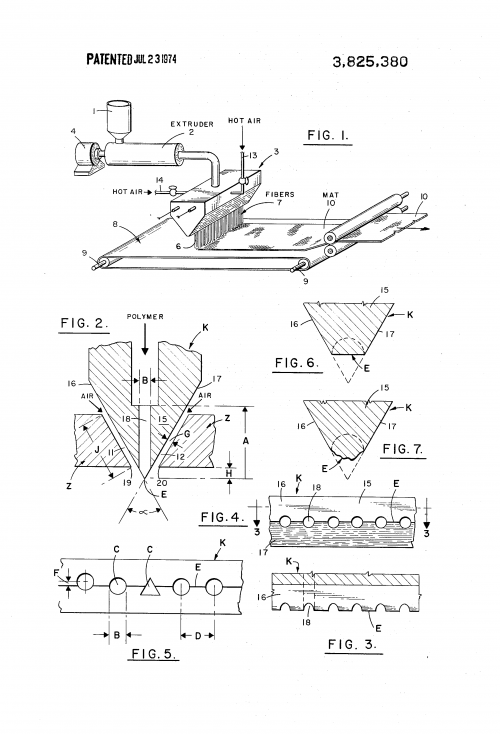Melt Blown Plastic: Difference between revisions
Jump to navigation
Jump to search
No edit summary |
(Added some more information) |
||
| Line 1: | Line 1: | ||
Melt-blown plastic is a material for making N95 masks, or HEPA filters as well. | =Basics= | ||
*A Process for Manufacturing [[Nonwoven Fabric]] of a very fine nature | |||
* | *Used mainly for filters, but also has many other applications | ||
*Not to be confused with [[Blow Molding]] | |||
*Uses fine nozzles for plastic which are surrounded by high velocity air to essentially atomise it | |||
*Melt-blown plastic is a material for making N95 masks, or HEPA filters as well. | |||
*Similar Processes are used for Fiberglass, Basalt Fiber...And Cotton Candy, although this is typically done with a linear, rather than radial output (see the patent section) | |||
=Patents= | =Patents= | ||
| Line 8: | Line 11: | ||
[[File:mbp.png|500px]] | [[File:mbp.png|500px]] | ||
=See Also= | |||
* | |||
=Useful Links= | |||
*[https://en.wikipedia.org/wiki/Melt_blowing The Wikipedia Page on Melt Blowing] | |||
Revision as of 14:54, 23 March 2020
Basics
- A Process for Manufacturing Nonwoven Fabric of a very fine nature
- Used mainly for filters, but also has many other applications
- Not to be confused with Blow Molding
- Uses fine nozzles for plastic which are surrounded by high velocity air to essentially atomise it
- Melt-blown plastic is a material for making N95 masks, or HEPA filters as well.
- Similar Processes are used for Fiberglass, Basalt Fiber...And Cotton Candy, although this is typically done with a linear, rather than radial output (see the patent section)
Patents
- Melt-blown plastic, original Exxon patent - [1]
